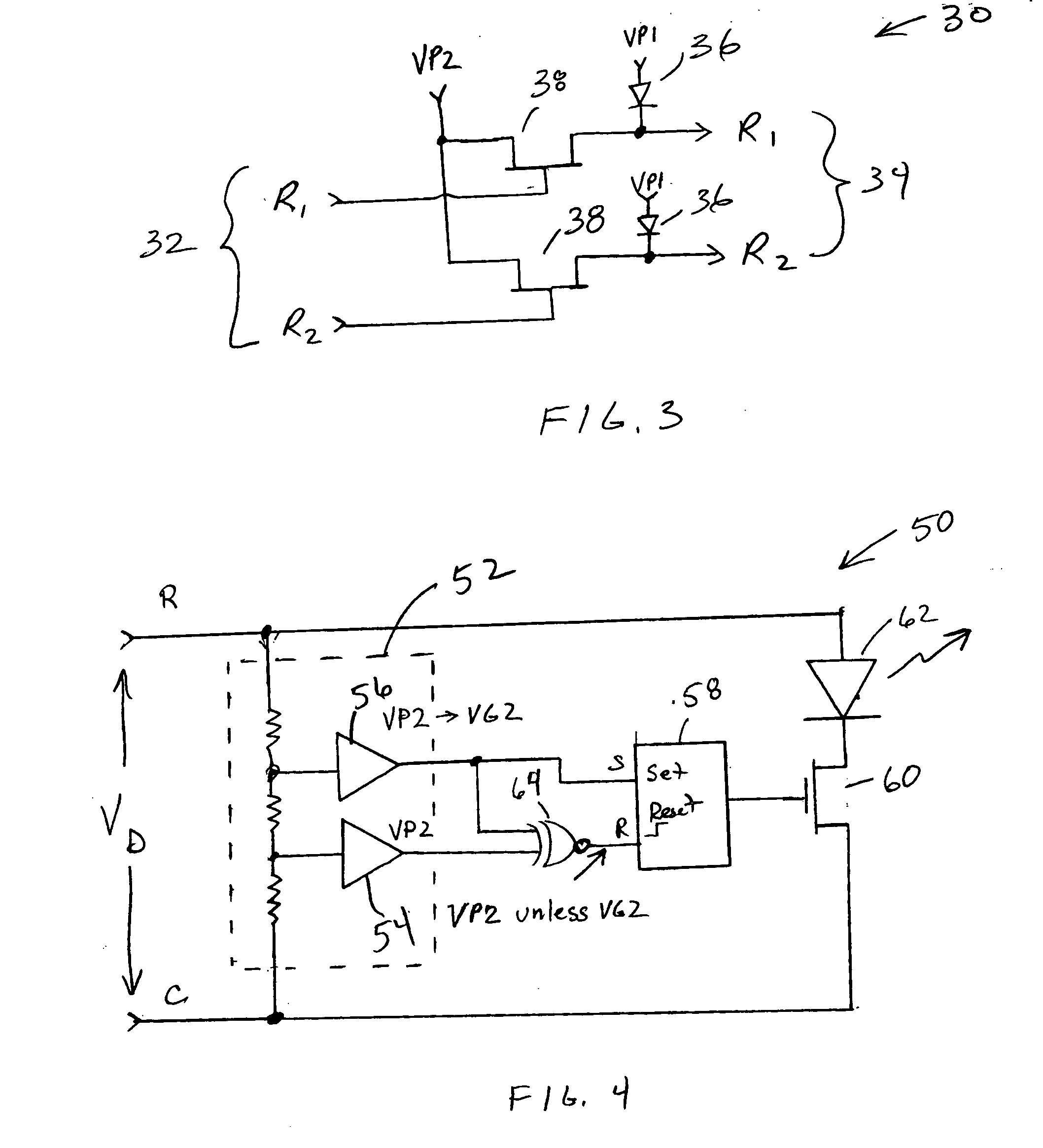Display methods and systems
a display array and display method technology, applied in the field of display methods and systems, can solve the problems of affecting the intensity of the display array, the maximum intensity of any one, and the lack of active elements, so as to improve the intensity of the multiplex display array, reduce wiring and driver needs, and improve the effect of multiplex display intensity
- Summary
- Abstract
- Description
- Claims
- Application Information
AI Technical Summary
Benefits of technology
Problems solved by technology
Method used
Image
Examples
embodiment 130
[0244]FIG. 29 exemplifies another embodiment 130 in which a display 132 having a generally fixed display fields 134 is adapted with an electronic ink region 138 and a horizontal slider 136 with a series of embedded electrodes. As slider 136 is moved over the electronic ink 138, the voltage is modulated on the embedded electrodes to program the pixels of the electronic ink (in conjunction with an opposing electrode beneath the electronic ink held at a selected voltage).
embodiment 150
[0245]FIG. 30 exemplifies another embodiment 150 in which a low cost display 152 having conventional segment outputs 154 is augmented with a rotating electrode bar 156 for controlling an area of electronic ink 158 retained on or proximal to the display. Information may be displayed by wiping the electrode bar 156 as its electrodes are modulated to write pixel quantities of information onto the electronic ink area 158 under which an opposing electrode is retained.
[0246] It will be appreciated that the moving electrode bar in these and other embodiments may be driven by any desired mechanisms, such as manually, geared motors, muscle wire, solenoids, and so forth.
[0247] It will be appreciated that a number of display types may be implemented by one or ordinary skill in the art without departing from the teachings found herein.
5.3 Additional Embodiments
[0248] The following embodiments may be implemented following the teaching of embodiment already described, wherein the “manual inte...
second embodiment
[0416] A second embodiment can provide the offsetting function for use with atomic clocks and other similar sources of time information. The value is received periodically and corrected by way of the user offset value before being used to set the display clock value.
[0417] The present system generally describes a method of controlling the displayed clock time on a computer device that has been configured for loading a time of day value from an external source, comprising: [0418] displaying information about the network based time setting; [0419] receiving a user offset value for use in offsetting the displayed clock value from that provided by said network based time setting; [0420] storing said user offset value; and [0421] adding said user offset value to said network based time setting in determining the clock value which is to be displayed.
[0422] Aspects of the inventive method include: adapting the method for use on personal computers connected to a network said user offset va...
PUM
 Login to View More
Login to View More Abstract
Description
Claims
Application Information
 Login to View More
Login to View More - R&D
- Intellectual Property
- Life Sciences
- Materials
- Tech Scout
- Unparalleled Data Quality
- Higher Quality Content
- 60% Fewer Hallucinations
Browse by: Latest US Patents, China's latest patents, Technical Efficacy Thesaurus, Application Domain, Technology Topic, Popular Technical Reports.
© 2025 PatSnap. All rights reserved.Legal|Privacy policy|Modern Slavery Act Transparency Statement|Sitemap|About US| Contact US: help@patsnap.com



